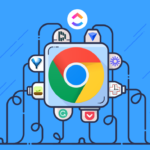In the digital age, video content has become ubiquitous across various platforms, from websites to mobile applications. Developing a high-quality video player is crucial for delivering a seamless and engaging viewing experience to users. This article serves as a comprehensive guide to building the best video player, covering everything from architecture video player flutter tools and features to optimization techniques and best practices.
Understanding Video Player Development:
Video player development involves creating a software application or component that can playback video content efficiently and with high quality. It encompasses various aspects such as video decoding, rendering, user interface design, playback controls, and integration with external services or platforms.
Key Components of Video Player Development:
- Video Decoding: Decoding video files into frames that can be displayed on the screen is a fundamental aspect of video playback. Utilizing hardware acceleration and optimized decoding algorithms can improve performance and reduce CPU usage.
- Rendering: Rendering involves displaying the decoded video frames on the screen while ensuring smooth playback and synchronization with audio. Techniques like double buffering and frame interpolation can enhance visual quality and reduce stuttering.
- User Interface Design: Designing an intuitive and user-friendly interface is essential for enabling users to navigate through the video content easily. Playback controls, fullscreen mode, subtitles, and audio track selection are common UI elements that should be incorporated.
- Playback Controls: Providing controls for play, pause, seek, volume adjustment, and playback speed allows users to interact with the video player effectively. Customizable controls and keyboard shortcuts can enhance the user experience.
- Integration: Integrating with external services such as content delivery networks (CDNs), analytics platforms, advertising networks, and social media platforms can extend the functionality and reach of the video player.
Best Practices for Video Player Development:
- Performance Optimization: Optimizing video decoding, rendering, and resource utilization is critical for ensuring smooth playback and minimizing latency. Techniques like lazy loading, adaptive streaming, and caching can improve performance.
- Cross-Platform Compatibility: Developing a video player that works seamlessly across different devices and platforms (web, mobile, desktop) requires careful consideration of platform-specific APIs, codecs, and screen resolutions.
- Accessibility: Ensuring accessibility for users with disabilities by providing support for closed captions, audio descriptions, and keyboard navigation is essential for inclusive video playback experiences.
- Security: Implementing measures to protect against content piracy, unauthorized access, and malware attacks is crucial for safeguarding video content and user data.
- Testing and QA: Thorough testing across various devices, browsers, and network conditions is necessary to identify and resolve compatibility issues, performance bottlenecks, and bugs.
Choosing the Right Technologies and Tools:
HTML5 and CSS:
Leveraging HTML5 video elements and CSS for styling and layout can provide a solid foundation for building cross-platform video players with native browser support.
JavaScript Frameworks:
Using JavaScript frameworks like React, Angular, or Vue.js can streamline development and facilitate the creation of interactive and dynamic user interfaces.
Video Player Libraries:
Utilizing open-source video player libraries such as Video.js, Plyr, or MediaElement.js can expedite development and provide additional features and customization options.
Video Encoding and Compression Tools:
Employing video encoding and compression tools like FFmpeg, HandBrake, or Adobe Media Encoder can optimize video files for efficient streaming and playback.
Analytics and Monitoring Tools:
Integrating analytics and monitoring tools such as Google Analytics, Bitmovin Analytics, or Mux Data can provide valuable insights into user behavior, engagement, and video performance.
Conclusion:
Building a high-quality video player requires careful consideration of various technical, design, and performance factors. By understanding the key components of video player development, adopting best practices, and leveraging the right technologies and tools, developers can create immersive and seamless video playback experiences that delight users across platforms. Whether developing a video player for a website, mobile app, or desktop application, following the guidelines outlined in this article can help developers build the best video player tailored to their specific needs and requirements.








